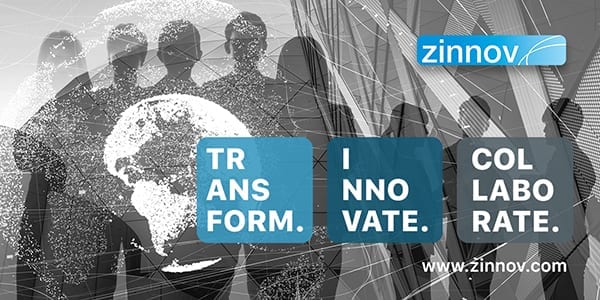Transparency Outside and Inside an Organization Made Clear
By: Sergey Kizyan, CTO, Intetics Inc. and Boris Kontsevoi, President and CEO, Intetics Inc.
 The term “transparency” means different things in different contexts. In the business world, for instance, transparency is the main word to indicate openness, trust and cooperation.
The term “transparency” means different things in different contexts. In the business world, for instance, transparency is the main word to indicate openness, trust and cooperation.
Any business has unseen aspects for the general public, and sometimes this triggers ambiguity. Today, few companies can brag about being transparent. When it concerns business processes, it requires great effort. Therefore, when a company is looking for a partner, the one with the most transparent policy will win the race.
[emaillocker id=”26087″]In software development, and specifically in the outsourcing business, transparency is a good added value for your company. As a rule, the resources involved in outsourcing projects are remote and rarely located in client facilities. This is fertile soil for fraud, which usually ends with a client receiving delayed, out of scope and budget, low-quality deliveries that are full of issues.
Staying transparent and reliable for several decades is a serious competitive advantage not only for a software development company but for any company. What are the components of the secret sauce?
Transparency Outside the Organization
Transparency outside the organization is one of the most important things to be covered. However, why are companies looking for transparency in the outsourcing business? Companies are looking for transparency to achieve:
- Professionalism and experience of the service provider
- Team dedication to the client and the project
- Confidentiality, privacy and data security
Customers want guarantees regarding the quality, scope, schedule and contract. Partnering with an outsourcing software development service provider, they want to know there are carefully elaborated risks and problem mitigation plans. In fact, having a plan like this is another proof of the company’s transparency. Along with that, it is imperative to follow the rules that establish transparency as a standard.
Governance Meetings
The main idea of governance meetings is to provide clients with the opportunity to communicate with the provider at any level, including the C-suite. In fact, we encourage such meetings on a recurring basis, on every project. By doing this, we state that we are really open and our client can schedule a meeting whenever it suits them.
Agile Methodologies
Though there are various approaches to software development, we realized that Agile methodologies ensure a high level of transparency. It is not about software development projects. It is also about being Agile in the in-house processes.
Status Reporting
Though this may seem like nothing new, few software service providers provide clear and comprehensible reports. Efficient reporting is an important responsibility for any project manager. Accurate reports are an essential part of every project since software providers quite often work remotely. The client needs to be on the same page with the team, plan the project steps and control the tasks. Clear-cut reports give the big picture of the project state and prevent misinterpretation.
Tracking Tools
Beside status reporting, the development team should use various tools allowing them to check and control project quality. Among those can be tools for unit tests, continuous integration, and regression automation, static code analysis, product metrics in mobile for released projects, crash reporting and firebase, and others.
The tools help the product from the inside. While the development team is perfectly aware of how, when and where to use certain tools, the client should also be able to use them too to receive clear tech KPIs.
 Project or Customer Portals
Project or Customer Portals
In addition to the tools above, it is good to have a so-called high-level tool like a web and mobile-based portal. It gives the ability to get high-level statuses of major project indicators. The portal we use also allows our customers to escalate the issues to our management team and receive fast access to all project artifacts.
Process Audits
We see process audits as a part of the internal processes, during which we verify that the project is well documented, has correct reporting, follows the standards, and the project ceremonies are held correctly. Our clients can join the audit if they decide, and the results are available for them regardless.
Proactive Project Monitor
The proactive project monitor is another approach aimed at checking the project quality. It is more technical than managerial and is controlled by the CTO at our company. In doing so, we check projects for specific types of risks and try to mitigate them. The customer is not involved in the process but if some potential issue is detected, we report this as soon as possible and try to resolve the problem in as transparent a manner as possible.
On-site Visits
This is a useful practice to ensure transparency and solve many potential and existing issues. On-site visits are useful in the following cases:
- It is efficient to spend some time together with the client team at the start of a project.
- Big software deliveries are better to be held on client premises.
- The miscommunication issues are better to be solved on-site.
- Another scenario for a visit is when a client comes to meet the whole team.
Video Control
Some clients may request to install video cameras to stream footage from the provider’s location. This implies more severe control. However, this approach becomes less and less popular, as the tracking tools give a detailed situation overview.
Security is a crucial part of the transparency policy. If an organization wants to be truly transparent, it is obligatory to adhere to security rules and standards. The security policy created in our company includes the specifically created infrastructure that ensures the confidentiality of the clients’ personal and business data.
Quality Assessment Platform
We consider software products and systems quality as an additional point of our transparency policy. We want our clients to be sure the products we deliver have a high level of quality with no hidden bottlenecks or issues. For that reason, we created a platform for the in-depth quality assessment and technical debt reduction that is used on our projects as a component of the software assessment and audit.
Transparency Inside An Organization
When a company follows the transparency policy, it means it is transparent outside and inside the organization. A transparent organization is open with its employees. Nothing is concealed and done behind the scenes. In a transparent organization, an employee knows everything about the company and its state. Ensuring such a level of transparency means following a set of rules and running a certain process.
Meetings with C-level Management
It is good practice to run the employees’ meetings with the C-level management team. This gives the opportunity for the employees to see the company cares about their needs, ideas and requests.
Use such meetings to share the latest news, updates and discuss questions. This regards not only strategic features but also to day-to-day aspects. These meetings help to establish loyal relationships between the top management team and company staff.
Sync Meetings with Department Director
C-level meetings are a great opportunity to discuss cross-company activities and global issues. However, it can be even more important to pay attention to local issues. For that reason, it is worth running regular meetings with the department head. This is one of the sides of the transparency policy.
Besides the updates and department news sharing, this meeting can become a motivation tool for employees. As soon as employees understand they are heard, they know the company cares about them.
For a department head, the meetings give the ability to mitigate many risks related to employee relations.
Continuous Check-up
Along with the high-level meetings, it is important to run a recurrent meeting of a project manager and a team. These meetings are about the project status check and about the team members. This is a chance to talk with the next level manager, ask questions, raise ideas and proposals.
Talent Management Team
Talent management team (TMT) or human resource management team plays a huge role in the internal organization transparency. They should participate in all the mentioned meetings. They set up and supervise the internal procedures that ensure transparency. TMT departments constantly monitor employees’ mood. They are those people who launch risk mitigation process in case of rising employees’ discontent level.
Team Buildings
Day-to-day meetings and work communications solve numerous difficulties. However, corporate life is also about employee leisure. This is why team buildings and company events are necessary. Though it may seem this has nothing in common with transparency, this is incorrect. Company events can also be regarded as an opportunity to share the company insights with the employees in an unofficial atmosphere. This is as effective as work meetings.
When a company combines all of these facets and adds them to the corporate policy, the company takes a step closer to transparency.
Transparency begins when a company not only talks about it to be mainstream but really practices it.[/emaillocker]
About the Authors:

 Boris Kontsevoi, COP, is the Founder and President of Intetics Inc, a software development company based in Naples, Florida. He has over 30 years of managing experience and about 40 scientific publications. He was a featured speaker at several international conferences. He holds a Master’s degree in Radiophysics and Computer Science from the Belarus State University and certificates in project management from Aspen (ISIM) University in Colorado.
Boris Kontsevoi, COP, is the Founder and President of Intetics Inc, a software development company based in Naples, Florida. He has over 30 years of managing experience and about 40 scientific publications. He was a featured speaker at several international conferences. He holds a Master’s degree in Radiophysics and Computer Science from the Belarus State University and certificates in project management from Aspen (ISIM) University in Colorado.
Sergey Kizyan is the CTO at Intetics. He has over 13 years of experience in the software development industry and holds Master’s degree in Computer Science from the Vinnytsia National Technical University. He is an ardent advocate of tech innovations and dives into the smallest details of every tech trend. This allowed him to grow from a position of a junior software engineer to Chief Technical Officer. Kizyan is the author of the “People-Oriented Management” book. He is listed among top authors on CodeProject resource. Kizyan’s book has become the basis for a new discipline at the Vinnytsia National Technical University. As a true sports fan, boxer and jogger, Kizyan believes that only strong perseverance can turn an amateur into a real tech and business expert despite any hurdles.






